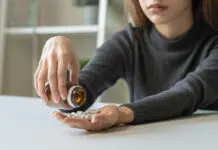As parents, our number one priority always is the health and safety of our children. We do our best to make sure they are eating healthily and getting enough exercise, as well as keeping up with their school work and signing them up for extracurricular activities. Our kids’ well-being and development is so important, and we don’t take it lightly.
But sometimes, despite our best efforts, we miss everyday things that could possibly be hurting our children. Sometimes they are things we’ve heard about but have yet to address, and other times they are things we’ve never known of and wouldn’t have guessed.
Whether you are aware of them or not, here are some things in our everyday lives that might be hurting our children:
Mattress
While we may be making sure that our kids are getting enough sleep, we may not think about the safety of their sleep. Your average mattress could contain harmful chemicals used in the materials and flame-retardant barrier. These chemicals can cause issues as minor as a rash or scratchy throat, or as serious as respiratory problems or cancer.
If you would rather not risk these possible ailments, you should seek out organic mattresses for your whole family. If organic is out of your price range, you can also search for mattresses with certifications addressing volatile organic compounds (VOCs) and use of non-toxic materials, such as CertiPUR-US®, GREENGUARD, and STANDARD 100 by OEKO-TEX®. You’ll sleep more soundly when you know the mattresses in your house aren’t harming your family.
Sugar-Free Foods
Kids love sweets and candies, and who can blame them! It’s natural for us to want to reduce our children’s sugar intake while also still giving them sweet indulgences, so we gravitate towards candies and treats labeled “sugar free.” Unfortunately, these sugar-free products are chock-full of harmful artificial sweeteners. Some of the worst artificial sweeteners are aspartame, acesulfame K, sucralose, and saccharin. Look for these and other dangerous artificial sweeteners in any processed food or treat you buy for you family; they may be hiding in products you wouldn’t expect.
To satisfy your children’s sweet tooths (in moderation), try to find healthy, natural sugar alternatives. Look for natural sweeteners like honey, coconut sugar, and stevia in products you buy. Alternatively, take control of sweets by making them at home. You can look up low-sugar recipes and control the amount of sweetness and type of sweetener that goes into your treats.
Imported Items
Let’s be honest, we don’t always look to see where the things we buy are made. And even when we make a good effort to, some items are just hard to impossible to find made in the U.S. — especially for an affordable price. So, sometimes we aren’t as diligent about checking origins. But we need to be.
Not every imported item is going to be dangerous, but after an asbestos scare with children’s makeup sets from the accessory store Claire’s, it was brought to light just how many foreign products imported into the U.S. contain asbestos. While the U.S. no longer mines or exports asbestos, it isn’t illegal to have here, so there is no regulation on imported goods containing the dangerous substance.
It’s our jobs as parents to make sure the the items our kids and family use on a daily basis are responsibly sources and free of harmful substances. Do your research on which companies import from where, and what their quality standards are. Not all items imported from other countries will contain dangerous chemicals, and doing your research on company production practices will give you confidence in the products you buy for your family.
Screens and Mobile Devices
Comparing our own childhoods to those of our children, things are wildly different in so many ways — but none is more noticeable than the technology boom that has happened. While many of us were drooling over our friend’s Nintendo and begging (unsuccessfully) for our own Game Boy, you are hard pressed to find a kid these days who doesn’t have their own tablet or smartphone. Even though we had TVs, video games, and computers “back in the day,” we had nowhere near as much access to electronics as kids these days do.
While kids need access to technology to keep up with their peers and to be successful in this tech-connected world, there is definitely a point when it’s too much. Excessive screen time can have several detrimental consequences, such as eye damage, sleep cycle disruption, spine and neck issues due to prolonged improper posture, reduced attention span, and health and weight issues from being too sedentary.
Do your best to reduce our children’s screen time as much as possible. There is no getting rid of it completely, but if you can significantly reduce their daily use, it will benefit their overall health immensely. Try to do more outdoor things with them, and encourage them to take up hobbies that don’t involve technology, such as making arts and crafts, gardening, or enrolling in a team sport.
Participation Trophies
Speaking of team sports, many kids are enrolled in some kind of competitive activity, whether it be sports, dance, 4-H, or something else. In most of these activities, there is some sort of prize for winning, but often there are also “participation trophies” that every kid involved gets. It’s a nice idea for every child to feel like they accomplished something, but past a certain age, a participation trophy might do more harm than good on a child’s self-esteem.
Trophy makers Saxton Industrial have this to say about the matter:
… there is some consensus amongst experts on child development that participation trophies for preschool to kindergarten age children could improve their self-esteem and desire to participate in a sport. But at around 5 years old, most children start to think about winning and by age 7 or 8, according to developmental psychologist Susan Harter in an NPR feature on kids and winning. So when children enter 2nd grade, it’s probably time to stop making every team win and time to stop giving every child a trophy and start letting kids compete to get better and to win. Most kids understand when they aren’t playing well and can see through an award for just being on a team or playing a sport.
So, while participation trophies are cute and good for your PreK and Kindergartners, by second grade you should seek competitive activities that no longer give them. Kids are smart, and they will see right through the empty gesture of an award just for showing up. They want the challenge and satisfaction of earning their awards, and even if they don’t win, they are learning the valuable skill of losing gracefully.
Maintaining our children’s health and well-being is the big goal in our roles as caregivers. We want to make sure they are happy and healthy as they grow, and are ready to take on the world when they leave the nest. It may take a little extra work and research sometimes, but it’s worth it to know that you are doing everything you can to ensure they have long and healthy lives.
—————————————————————————————–
Mila Sanchez is a very involved aunt to 4 kiddos and writer living in beautiful Boise, ID. Her ambitions include traveling the world, studying languages, and taking pictures of her dog, Baymax. Connect with her on twitter and instagram!











